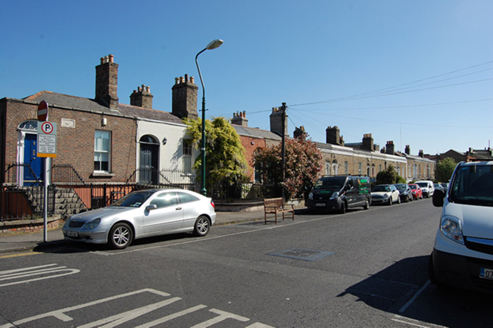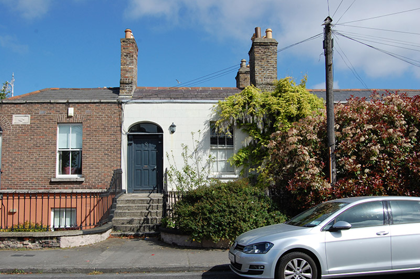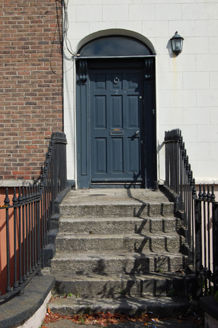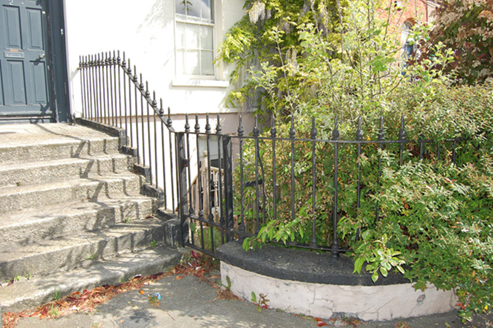Survey Data
Reg No
50110286
Rating
Regional
Categories of Special Interest
Architectural
Original Use
House
In Use As
House
Date
1835 - 1840
Coordinates
315395, 233051
Date Recorded
08/05/2017
Date Updated
--/--/--
Description
Terraced two-bay single-storey house over raised basement, built 1838 as one of terrace of ten. M-profile pitched slate roof having terracotta ridge tiles, shared red brick chimneystacks with clay pots, rendered parapet having cut granite coping. Lined-and-ruled rendered walls with cut granite plinth course over rendered wall to basement level. Square-headed window openings having granite sills and six-over-six pane timber sliding sash windows. Elliptical-headed door opening having timber doorcase comprising flat panelled pilasters and console brackets, replacement door and plain glazed fanlight. Granite steps with cast-iron coal-hole cover and boot-scrape to platform. Set back from north side of road having basement-level front garden. Basement area bounded by rendered plinth wall with granite coping surmounted by wrought-iron railings having decorative cast-iron collars and having curved alignment to main entrance steps. Recent pedestrian gate with concrete steps to basement level. Basement door beneath entrance steps.
Appraisal
This house retains its original facade composition and historic fabric, including its ironmongery and sections of the door surround, which are characteristic of its time. The shared scale and features of the terrace contribute to the unified residential neighbourhood character of the area. These small genteel townhouses are an interesting typology and were built for the lower middle classes in the city. The terrace was the first constructed on the street in the late 1830s. It was historically called Bell Villa, as indicated on the plaque on No. 1, which has a carved hand pointing in an easterly direction towards the rest of the group. The street was named after the philanthropist Thomas Pleasants (1729-1818) who donated money towards the establishment of the nearby Meath Hospital.







